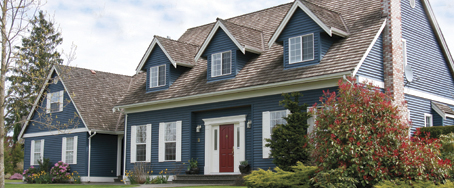Home Inspection Services
An experienced inspector will prepare your Home
Inspection Reports with easy-to-read details on:
- The condition of every major component from the roof to the basement
- Major and minor deficiencies
- Any major expenditures necessary
- What to watch out for
- Helpful home preservation tips
- Safety concerns
- And much more
Our Home Inspector will review the detailed report with you to make sure you understand everything and answer any remaining questions.
Radon Testing
Radon is a cancer-causing natural radioactive gas that you can't see, smell or taste. Its presence in your home can pose a danger to your family's health. Radon is the leading cause of lung cancer among non-smokers and the second leading cause of lung cancer in America. The U.S. Surgeon General and EPA recommend that all homes be tested for the presence of radon. Northern New York Home Inspections is a qualified radon testing service, having completed the Radon Measurement Operator Proficiency course. We use measuring devices that are placed in the lowest level of the residence for a period of 48 hours, with the results available at the end of the test.
To learn more about radon and view a citizens guide to radon, go to
www.epa.gov/radon/pubs/citguide.html
or view the Home Buyer or Seller's Guide at
www.epa.gov/radon/pubs/hmbyguid.html
Water Testing
Drinking water may contain several contaminants, some of which are hazardous, and some are not. Public water supplies are tested by the utility, and must meet stringent EPA standards. Nevertheless, even when the public water supply is safe, problems can originate in the distribution system.
- LEAD - Drinking water may be contaminated with lead. This problem may originate with the piping, fittings and fixtures in the home. Over time, water that is acidic or soft, may have a corrosive effect on piping, fittings and fixtures, and cause the lead to leach into the water.
- SODIUM - Homes that use water-softening systems may have excessive amounts of sodium in the water. Persons on a sodium-restricted diet may be affected. Water from a softener may contain 100 mg/l of sodium or more.
- BACTERIA - Well water may become contaminated with bacteria resulting from faulty septic tanks or decayed organic matter that may have washed into the well. Dug wells are particularly susceptible. Water is analyzed for coliform bacteria to determine whether or not it is potable.
- pH - Acid rain leaching into the soil has caused some water to be acidic (low pH). Acidic water can cause deterioration of pipes.
Septic Dye Testing
The purpose of a septic dye test is to determine leaks or inadequacies in the septic system, thus indicating the need for repairs or alterations. A strong but non-toxic and non-staining dye is introduced into the system, typically through a toilet or sink. As water is run through the system, the dye will create a visible trace of any possible seepage or discharge from the septic system to the surface. The dye also determines if the septic system can handle the volume of waste that is currently being put through it.
Pre-Purchase Inspection
A home inspection is a visual process where all of the items typically used within a home are tested and/or operated to verify proper operation or installation. Doors and windows are opened and closed, roofing materials inspected, air-conditioning and heating systems operated. The Inspector will fill the sinks and tub(s), run the shower(s), and flush the toilets. All the while making notes on the condition and operation of the components tested. Upon completion a report will be distributed to you.
Seller Certified Home Program (Pre-Listing Inspections)
Listing inspections are very good for the homeowner who may not be in tune with the condition of their home. A great many sales are cancelled due to the buyer's shock at the "functional condition" of the home. It may look great, but have serious technical, safety, or functional issues present without the owner's knowledge. Having the home inspected prior to placing on the market is the ideal way to identify and either repair or disclose the issue found in the Inspection Report. Obviously, repairing the items would be the most beneficial towards completing the sale. However, there may be financial reasons where the owner can't make the repairs. Disclosing them up front and pricing the home based upon that disclosure will often times produce a higher net sales price for the owner.
New Construction Inspections
New construction inspections are performed at the completion of construction, but prior to your final walk through with the Builder's Customer Service Representative or Superintendent. It is always a good idea to verify that utilities (gas, water, and electric) have been turned on, either by you or the Builder depending on the Builder's policy. The inspection should be scheduled just a day or two before your final walk through with the Builder. This will ensure that most, if not all, last minute items have been completed prior to your inspection. At the conclusion of the inspection a completed report will be distributed to you.
ΔTop of Page
|





